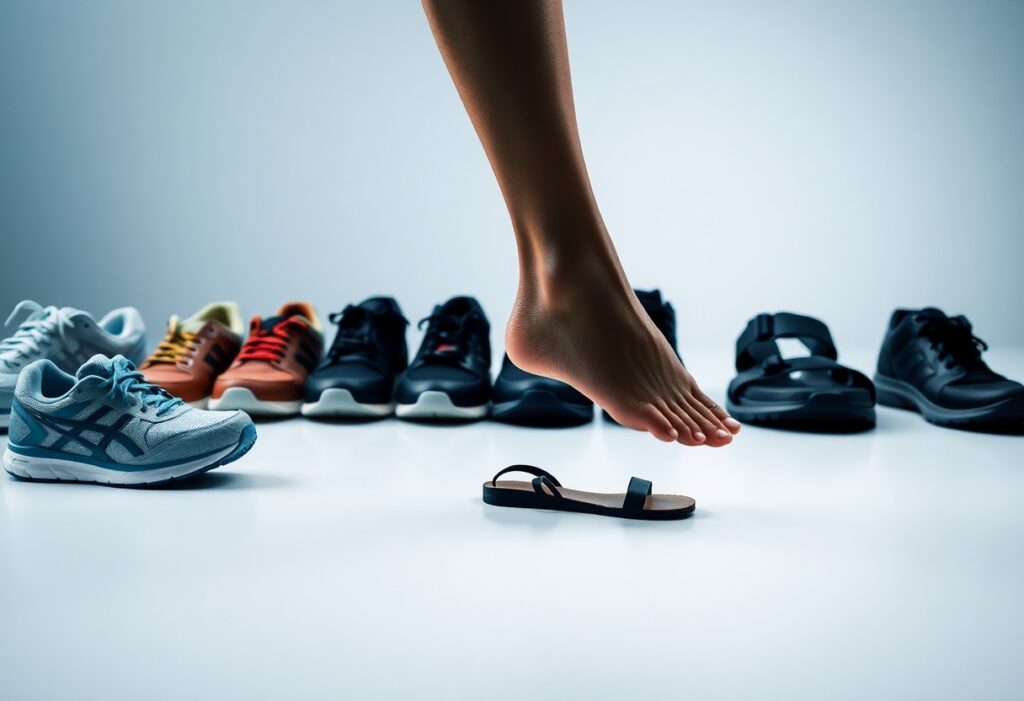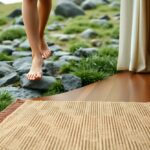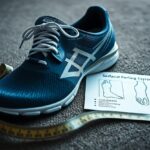
When you walk, your choice of footwear plays a crucial role in either enhancing your foot health or causing significant problems. Many people make the common mistake of believing that shoes with extra cushioning and support are the best solutions for foot discomfort. However, conventional footwear often does more harm than good. Dr. Alissa Kuizinas, a reputable podiatrist from Massachusetts, strongly advocates for barefoot shoes or minimalistic footwear, arguing that these options promote stronger and healthier feet. By selecting shoes that enable your feet to function naturally, you can significantly lower the risk of developing foot issues and enhance your overall foot wellness.
Identifying How Traditional Footwear Negatively Affects Your Foot Health
Although traditional shoes may offer temporary relief from foot pain, they often exacerbate existing conditions and introduce new problems, as pointed out by Dr. Alissa Kuizinas. She highlights that the $133 billion shoe industry frequently prioritizes aesthetic appeal and profit margins over real foot health, resulting in designs that can constrict and weaken your feet over time. This reliance on conventional footwear leads to a harmful cycle that ultimately jeopardizes your foot health and can result in long-term complications.
Analyzing the Shoe Industry’s Flawed Approach to Foot Health Solutions
The crux of the issue lies in the shoe industry’s misguided approach to addressing foot health, which typically focuses on adding excessive cushioning, support, and rigid construction, neglecting the underlying causes of discomfort. This strategy fosters a false dependency on shoes that may actually harm your foot health in the long run, resulting in various complications that could be mitigated through better design principles.
Identifying the Design Flaws in Conventional Footwear
Numerous traditional shoe designs feature narrow toe boxes, rigid soles, and excessive cushioning that can impede natural foot movement, leading to weak and dysfunctional feet. Dr. Kuizinas emphasizes that footwear should protect your feet from external elements while allowing for natural movement instead of restricting their natural movement. An optimal shoe design should prioritize natural foot function and minimalist features, such as wider toe boxes, flexible, flat soles, and minimal cushioning to promote foot health effectively.
By embracing barefoot shoes or minimalistic footwear, you can significantly strengthen your feet and enhance your overall foot well-being. Dr. Kuizinas advocates for a philosophy of utilizing as little shoe as possible, enabling your feet to function naturally and move freely, which is essential for maintaining optimal foot mechanics and health.
Comprehending the Necessity of Natural Foot Movement for Optimal Health
Footwear that restricts your foot’s natural movement can lead to a wide array of foot problems and discomfort. It is vital to evaluate how your shoe choices influence your overall foot health and comfort levels, enabling you to make informed footwear decisions that align with your well-being.
Assessing the Impact of Footwear on Your Foot Mobility
To fully appreciate how shoes affect your foot’s mobility, it’s essential to scrutinize the specific designs and features of your chosen footwear. Traditional shoes often come equipped with cushioning and support features that can inadvertently hinder your foot’s natural movement, resulting in weak and dysfunctional feet over time. Such restrictions may prevent your feet from developing the necessary strength and flexibility to thrive in various environments.
Understanding the Advantages of Encouraging Natural Foot Mobility
The benefits of allowing your feet to move naturally are extensive, as strong feet are essential for overall foot health. By opting for minimalistic shoes or barefoot footwear, you empower your feet to operate as intended, fostering strength and resilience. Natural movement is key to developing strong feet. When confined by conventional footwear, you risk facing numerous foot issues and discomfort. In contrast, adopting minimalistic shoes or barefoot options can profoundly enhance your foot health by facilitating natural movement and promoting strength-building. By choosing appropriate footwear, you can reduce your risk of developing foot problems while enhancing your overall foot wellness.
Exploring the Concept of Functional Footwear for Enhanced Well-being
Understanding the characteristics of functional footwear is vital, as these shoes prioritize both foot health and natural movement. Functional shoes are intentionally crafted to allow your feet to operate as they were designed to, eliminating the need for excessive support or confinement.
Defining Functional Footwear and Its Essential Features
By researching and experimenting with various shoe styles, you’ll discover that functional footwear possesses unique characteristics, including a wide toe box, flat and flexible soles, as well as minimal cushioning and support. These traits enable your feet to move freely and naturally, ultimately promoting stronger and more capable foot mechanics.
The Benefits of Functional Footwear for Enhancing Foot Health
Wearing functional shoes offers numerous benefits, such as improved foot strength, a lower risk of injury, and enhanced overall foot health. These shoes allow your feet to function as intended, leading to stronger feet and better balance throughout your daily activities. Functionally designed footwear is crafted to support your feet without placing unnecessary constraints, enabling them to move and flex naturally. This design philosophy fosters optimal foot health and minimizes the likelihood of developing foot ailments. By selecting functional shoes like barefoot shoes or minimalistic options, you actively promote healthy foot function and mitigate the risk of foot pain and injuries. Transitioning to functional footwear may require a gradual adjustment, but the long-term benefits for your foot health are truly invaluable.
Key Features to Seek in Functional Footwear for Optimal Health
To achieve the best possible foot health, it is crucial to look for shoes that incorporate specific features. Key attributes to keep in mind include:
- Wide toe box
- Flat and flexible soles
- Minimal cushioning and support
Paying attention to these characteristics will greatly assist you in selecting shoes that encourage healthy foot function and support your overall well-being.
Recognizing the Importance of Wide Toe Boxes and Flexible Soles
A critical feature of functional footwear is a wide toe box, which allows your toes to spread naturally. This design helps prevent toe jamming and other discomfort-related issues that could lead to chronic foot pain and complications over time.
Understanding the Significance of Minimal Cushioning and Support
Beyond a wide toe box, functional shoes should also feature minimal cushioning and support. This design aspect allows your feet to move naturally while strengthening the muscles within, thereby reducing the risk of foot issues. It is essential to highlight that minimalistic footwear, such as barefoot shoes, can greatly enhance your foot health by facilitating natural foot function. By opting for shoes with minimal cushioning and support, you can bolster muscle strength in your feet and significantly decrease the chances of injuries. This strategic choice not only improves your overall foot health but also lowers the likelihood of experiencing chronic pain. Therefore, it is essential to prioritize footwear that allows your feet to move naturally without excessive cushioning or support.
Gradual Transitioning to Functional Footwear: A Comprehensive Guide
Having recognized the significance of functional footwear, it’s time to embark on your transition. Contrary to the widespread belief that more cushioning and support equate to increased comfort, you should aim for minimalistic shoes or barefoot shoes that facilitate your feet’s natural functioning.
Practical Tips for a Seamless Transition to Functional Footwear
Despite any initial reservations, start incorporating functional shoes into your daily routine by following these practical recommendations:
- Begin with short walks and progressively increase your distance
- Select shoes that feature a wide toe box and flat soles
- Opt for minimal cushioning and support
The key is to give your feet ample time to adjust to the new shoes while simultaneously reinforcing the muscles within your feet.
Patience is Key During Your Transition to Functional Footwear
Transitioning to functional footwear requires patience and a gradual approach. Shoes that are overly minimalist can cause discomfort and pain if your feet are not yet accustomed to them. Taking things slowly is crucial, granting your feet the opportunity to acclimate to the new footwear. Footwear options such as barefoot shoes or minimalistic shoes can be incredibly beneficial for your foot health, but it’s essential to introduce them gradually. Overuse or improper sizing can lead to injuries or persistent discomfort. The ultimate aim is to strengthen your foot muscles while enhancing your overall foot health, so patience is paramount, and rushing through the transition is not advisable. The rewards will be substantial; anticipate improved balance, reduced pain, and stronger feet.
Fostering Strong and Functional Feet through Thoughtful Footwear Choices
Even in a culture where shoes with excessive cushioning and support are prevalent, you can cultivate strong and functional feet by being discerning in your footwear choices.
Exploring the Connection Between Foot Strength and Overall Health
In addition to various health factors, foot strength significantly influences your overall well-being, impacting your balance, posture, and movement capabilities.
How Functional Footwear Facilitates the Development of Strong Feet
Shoes designed with functionality in mind—characterized by a wide toe box, flat and flexible soles, and minimal cushioning—are essential for developing strong feet, as they allow natural movement. Indeed, wearing functional shoes or barefoot shoes can greatly assist in building stronger foot muscles and improving your overall foot health. By permitting your feet the freedom to move and function naturally, you can minimize the risk of foot problems while optimizing your balance and stability. As you transition to minimalistic shoes, anticipate enhancements in your walking technique and overall sense of well-being.
By taking proactive measures to manage your foot health, you can select footwear that supports your feet’s natural functions instead of hindering them. Opt for barefoot shoes or minimalistic options that allow your feet to operate naturally, fostering strength and stability over time. Begin your journey by seeking out shoes with a wide toe box, flat and flexible soles, and minimal cushioning and support, while exercising patience as you transition to a more natural walking style.
The Article A Podiatrist’s Guide to How Shoes Affect Your Foot Health appeared first on My Shoes Finder
The Article How Shoes Impact Your Foot Health: A Podiatrist’s Insights Was Found On https://limitsofstrategy.com
The Article Shoes and Foot Health: Insights from a Podiatrist First Appeared ON
: https://ad4sc.com








Comments are closed